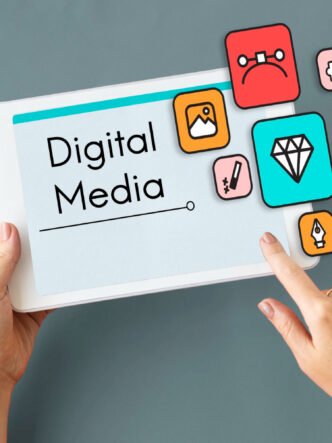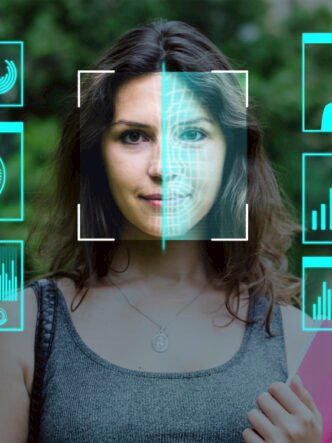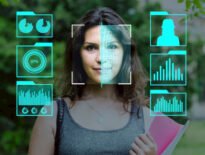Generations would pass on knowledge for centuries through storytelling. Myths and legends taught lessons about morals, survival, and much more. Today, storytelling is just as powerful. The mix of emotion, context, and structure is what makes it so effective.
Learners face many distractions in an e-learning environment and stories help to anchor information in a way that makes an impact. Stories build learner connections and turn abstract information into relatable knowledge.
The rise of storytelling in e-learning video reflects both advances in technology and an understanding of how humans learn best. Rather than dry explanations of abstract concepts, telling stories with relatable characters in realistic scenarios makes all the difference. No L&D professional wants to hear that a compliance video is boring and unmemorable. This is why stories are so valuable. When online educators and corporate trainers weave facts into stories, abstract knowledge becomes more relatable.
E-learning brands need to use the right video hosting platform if they want to host and manage story-rich video series. This ensures that viewers watch them without any problems with performance as the business scales.

The psychology of storytelling and learner engagement
The effectiveness of storytelling in e-learning videos is supported by psychology and neuroscience. When learners hear a story, it affects their brains in various ways.
Emotional engagement
Stories create an emotional response that triggers the release of cortisol in the human brain. Cortisol makes learners invest in a story. When learners empathize with a character, oxytocin comes into play and makes them care. Once learners are invested in a story and care about the characters, they want a resolution. The anticipation of a resolution to the story releases a surge of dopamine. Emotional experiences are deeply encoded in the brain due to these neurotransmitters, so they create strong memory traces and learners remember with greater accuracy.
Neural coupling
Research shows that when learners hear a story, the neurons in the brain fire in the same patterns as the person telling the story. This is known as ‘neural coupling,’ also referred to as ‘mirroring.’ The alignment creates a shared state and a basis for empathy and successful communication.
Dual coding theory
Learners process visual and auditory elements through separate channels in the brain. Processing information through these two channels makes retention and recall of information more effective. This is why video engagement strategies work better than using text-only formats.
Contextual learning
Narrative learning provides a coherent structure. This helps to reduce cognitive load for learners. They don’t have to struggle to make sense of fragments of information. The information comes in a logical structure that helps them to retain it.
Examples of narrative-driven e-learning content
Educational storytelling is seen in many industries today, from academic institutions to corporate businesses.
1. Corporate training
One of the best uses of stories in corporate training is to teach sensitive topics such as data security and workplace harassment. A story that follows a new employee as he or she makes mistakes with data security and learns through them is relatable and helps to show why certain cybersecurity rules matter.
Informal talking head videos can be very effective in teaching compliance in corporate training. Employees like to learn from fellow employees as it is easier to relate to them and feel empathy. For example, scenarios about fire safety awareness could feature various employees encountering fire risks and dealing with them.
In security training, a scenario could feature a supervisor asking a new employee for private banking information via a group email and then explain why this is wrong.
To teach ethical awareness, a series of animated videos could tell stories about various conflicts of interest among employees and how to address them.
Stories can help to develop soft skills such as communication and leadership. A video might follow a fictional manager facing a team conflict. Some of his strategies may not work and then he could come up with an effective strategy that learners can apply in the workplace.
Video messaging as part of corporate training can help trainers to communicate with employees and get feedback. They can answer questions and help to clarify information for learners.
2. Educational institutions
Narrative learning in education has many benefits. Educators can integrate storytelling into lessons on any subject. A story about a young scientist who makes a discovery captivates the imagination of learners in a topic that may otherwise seem abstract and boring.
Educational videos all have one thing in common – they take the learner on a journey of discovery. The ‘hero’s journey’ and the ‘Three Act Structure’ are frameworks educators commonly use in college online courses.
Using first-person perspective to tell a story helps learners to relate more personally to a lesson. It creates empathy with the protagonist. E-learning experts often advise course designers to cast the learner as the protagonist and weave the course content into a narrative arc.
3. Healthcare industry training
In healthcare training, case-based video stories help learners connect protocols with patient care. For instance, instead of memorizing a checklist of steps, videos for nursing students might follow the diagnosis and treatment of a specific patient. With the use of live streaming videos, patient care procedures become more tangible and help nurses to apply what they learn.
4. Language learning platforms
Video-based language courses often use stories to introduce vocabulary and grammar. Framing learning around characters and scenarios encourages learners to pick up language in context rather than learning lists of words. For example, a story may feature someone going to a grocery store to buy vegetables.

Balancing storytelling with educational clarity
Storytelling is powerful but online educators and trainers need to balance it carefully with their objectives. Stories that are too elaborate could obscure the core learning goals. If narratives sound artificial or forced, they won’t appeal to learners. Here are some principles that could help with finding the right balance:
A story must have a clear purpose
The reason for using a story in an educational video is to illustrate certain facts. Stories should never feel like an ‘add-on’ but a framework through which to deliver knowledge. For example, if the learning goal is to understand online safety, the story must be about a realistic online security problem and how to avoid it.
Keep it concise
Attention spans of learners are limited and stories need to enhance and not distract from the educational content. A short scenario in e-learning often teach more than a video of 15 minutes that features a complex plot.
Use relatable characters
Learners engage more when they see themselves in characters. Stories must reflect the situational, cultural and professional context of the target audience.
Integrate reflection points
Learners should have pauses to reflect on stories and answer questions or apply a lesson. This helps to close the gap between a story and how to apply its message in real life.
Use analytics to measure engagement
Online educators need to find out how well their storytelling videos are performing. They can find out how learners engage with them by using Cincopa analytics. With the insights they gain, they can make improvements to their e-learning videos.
Conclusion: Story-driven videos are the next step in e-learning evolution
The increasing use of storytelling in e-learning videos isn’t a passing trend. It signals a shift in digital education. It answers a very human need in a digital world and makes learning more memorable by engaging emotions and contextualizing knowledge. Stories provide a framework to help structure content in meaningful ways.
Videos are already a medium rich in sensory engagement and using stories makes them even more so. E-learning brands should explore Cincopa home page and sign up for a free trial. This allows them to explore how the platform helps them to manage and distribute their e-learning videos.









